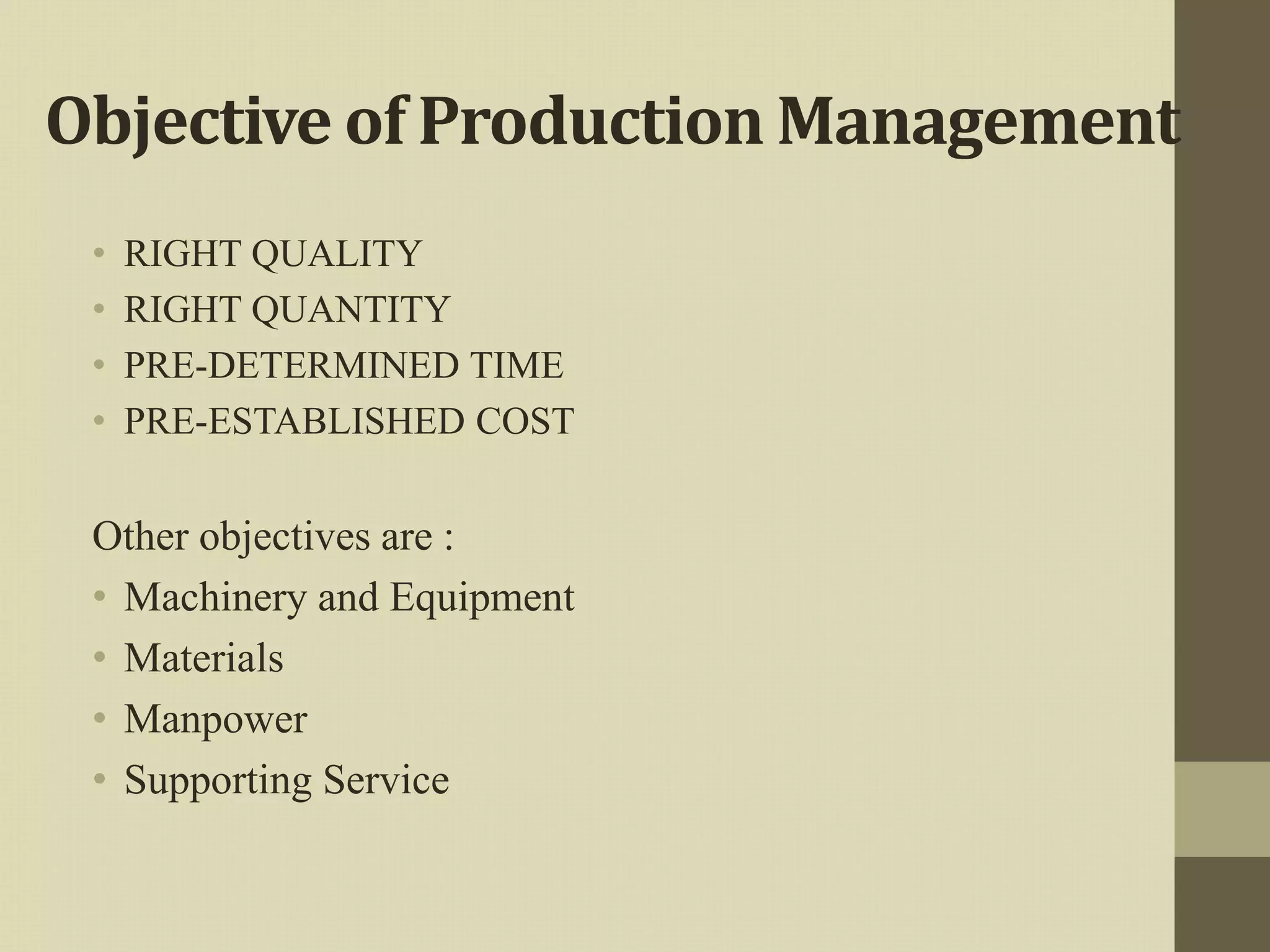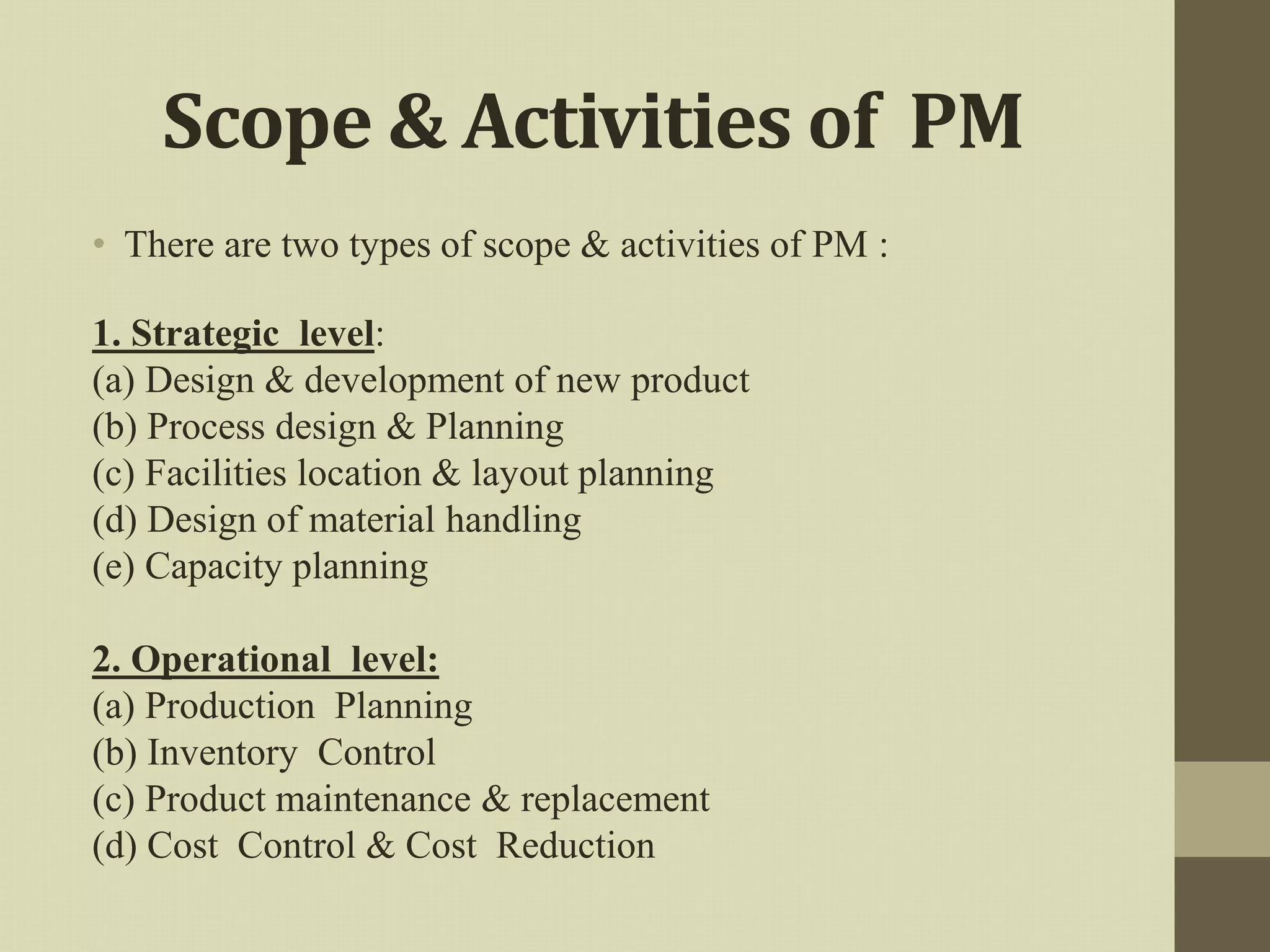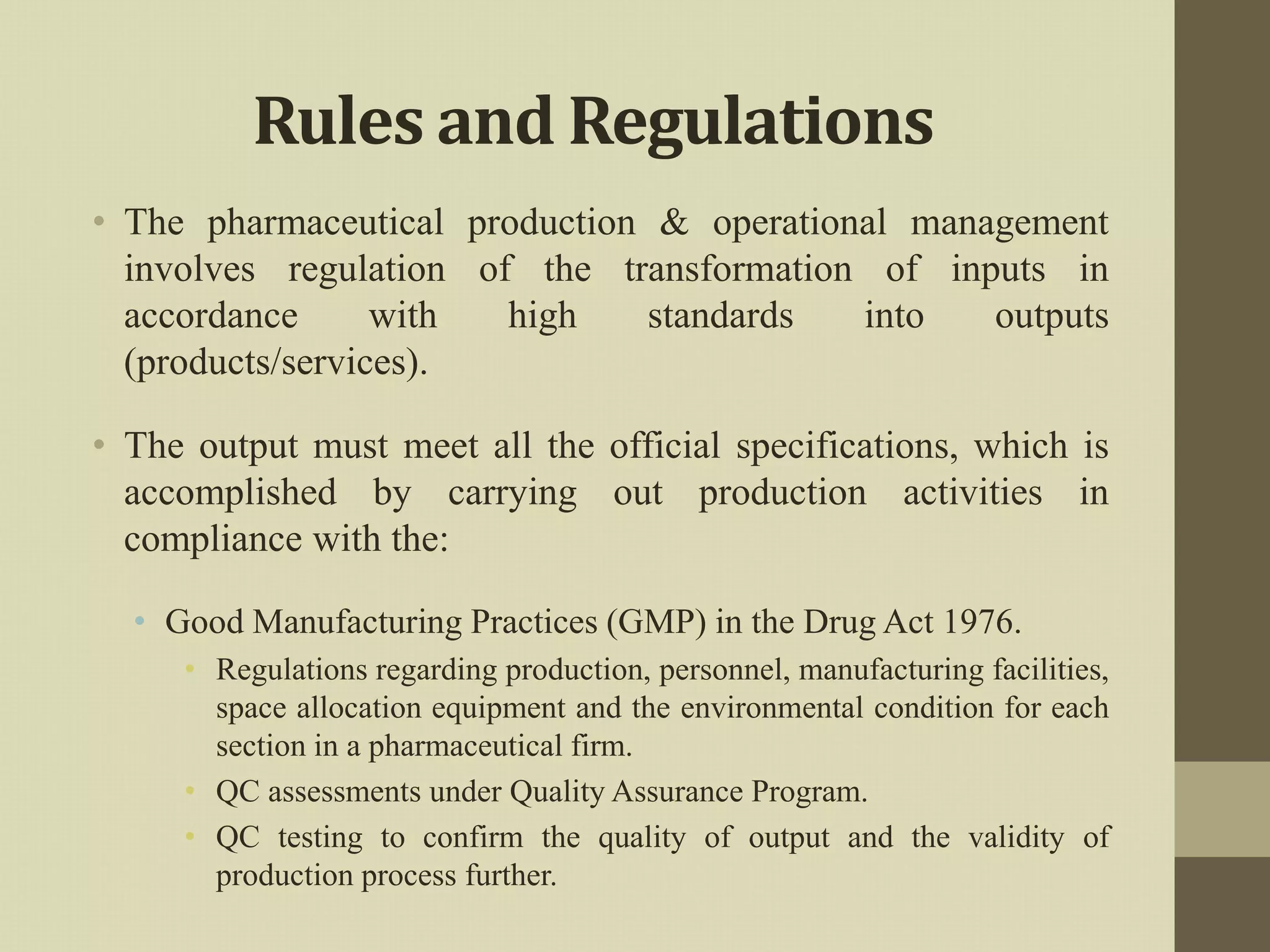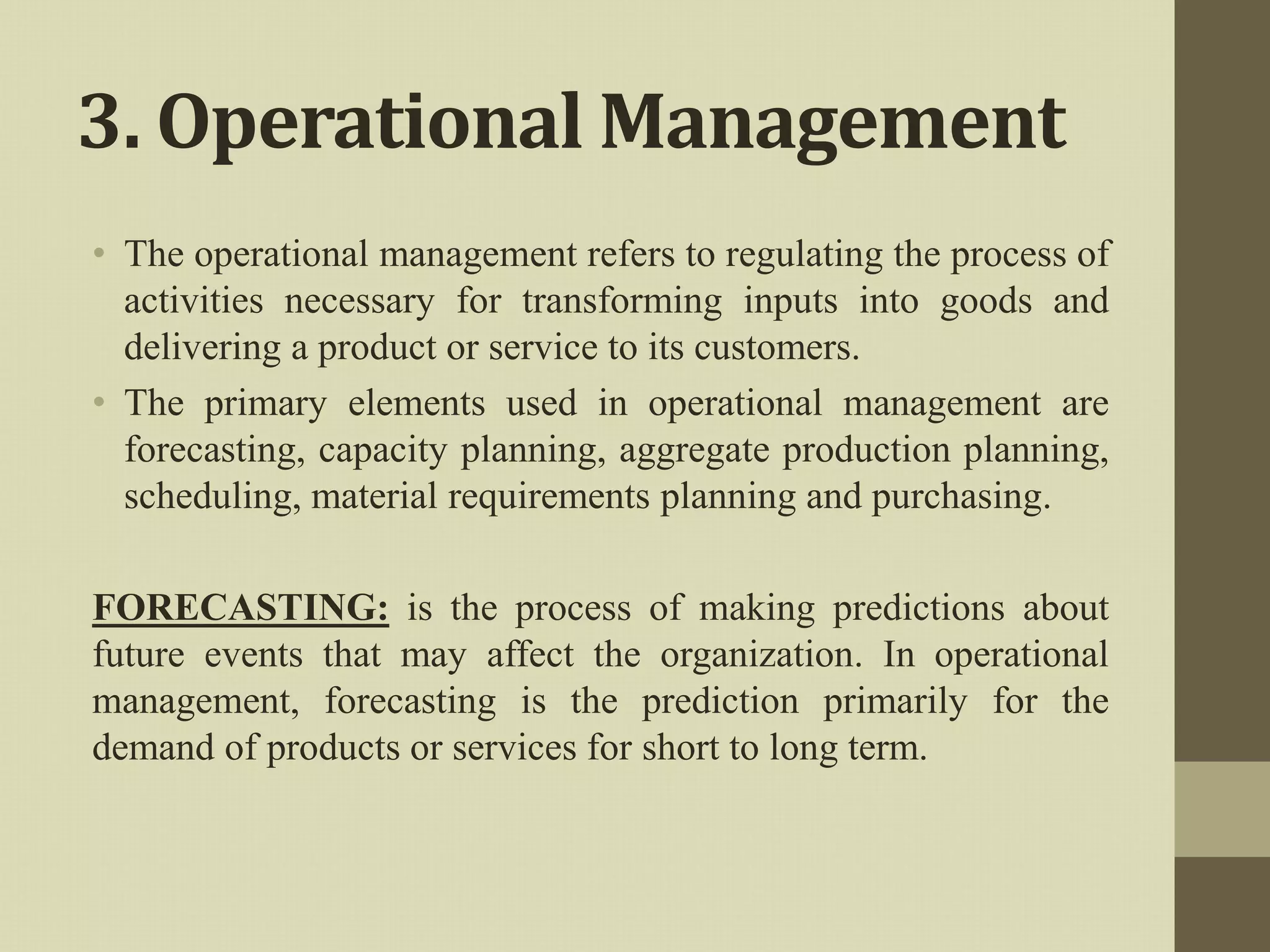Production management involves planning and regulating operations to transform materials into finished products, focusing on aspects like product quality, quantity, cost, and timeliness. Key elements include input management, cost control, and operational management, emphasizing inventory control and compliance with regulations such as good manufacturing practices. Recent expansions in production management also incorporate material management, along with the strategic and operational activities necessary for effective production processes.



































